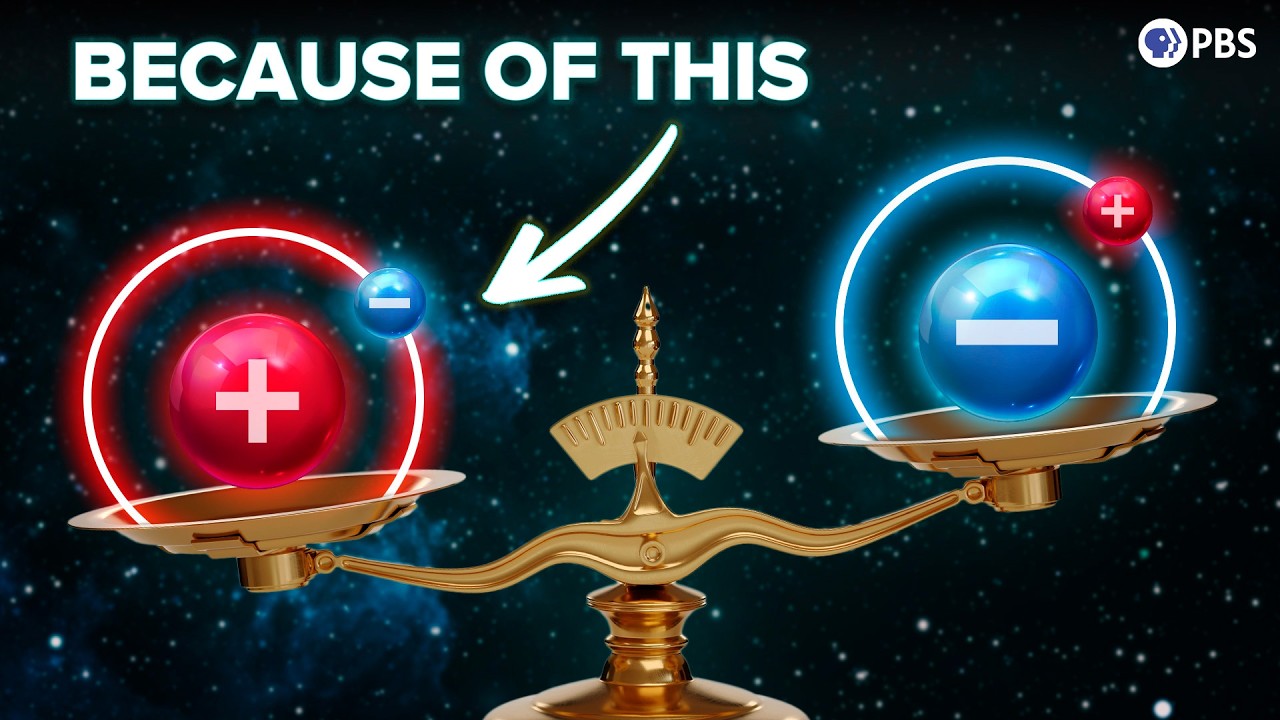The video explores why antimatter did not annihilate all matter in the universe after the Big Bang, highlighting a slight asymmetry that allowed matter to prevail. Recent findings from the Large Hadron Collider (LHC) reveal a 2.5% asymmetry in decay rates of baryons containing bottom quarks, suggesting a violation of charge parity (CP) symmetry, but further research is needed to fully explain the matter-antimatter imbalance.
The video discusses the intriguing question of why antimatter did not annihilate all matter in the universe following the Big Bang, leading to a universe filled only with radiation. At approximately 1/1000 of a second after the Big Bang, matter and antimatter should have formed in equal amounts and subsequently annihilated each other. However, a slight asymmetry in the quantities of matter and antimatter allowed for the existence of the universe as we know it. The video highlights recent findings from the Large Hadron Collider (LHC) that bring us closer to understanding this matter-antimatter imbalance.
The concept of matter and antimatter is explained, emphasizing that every particle of matter has a corresponding antimatter counterpart with opposite quantum properties. The video uses the analogy of vortices in water to illustrate how matter and antimatter can exist simultaneously without annihilating each other immediately. Quantum fluctuations in a vacuum can produce matter-antimatter pairs, but the expectation is that these pairs would annihilate each other, leaving a universe devoid of matter. The key to understanding why matter survived lies in the tiny asymmetry that allowed a slight excess of matter over antimatter.
The video delves into the principle of charge parity (CP) symmetry, which posits that the laws of physics should be the same for matter and antimatter. However, this symmetry must be violated to explain the observed dominance of matter. The LHC has been instrumental in studying CP violation, particularly through experiments involving bottom quarks, which are known to exhibit this asymmetry. The recent findings from the LHCb experiment indicate a significant difference in the decay rates of baryons containing bottom quarks, marking the first observation of CP violation in baryons.
The LHCb experiment involved smashing protons together to study the decay products of bottom quark-containing baryons. After analyzing data collected over several years, researchers found a 2.5% asymmetry in decay rates between matter and antimatter baryons, with a high confidence level. This discovery suggests that baryons, which include protons and neutrons, may exhibit CP violation, indicating that the properties of matter and antimatter are subtly different. However, this level of asymmetry is not sufficient to fully explain the matter-antimatter imbalance in the universe.
The video concludes by acknowledging that while the recent findings are a significant step forward, they do not yet provide a complete explanation for the existence of matter. Further research is needed to explore potential sources of CP violation beyond quarks, particularly in leptons like electrons and neutrinos. Upcoming experiments aim to investigate these possibilities, and the search for answers continues. The video emphasizes the importance of scientific inquiry and curiosity in unraveling the mysteries of the universe, supported by educational initiatives like Kiwico that promote hands-on learning in science and engineering.
